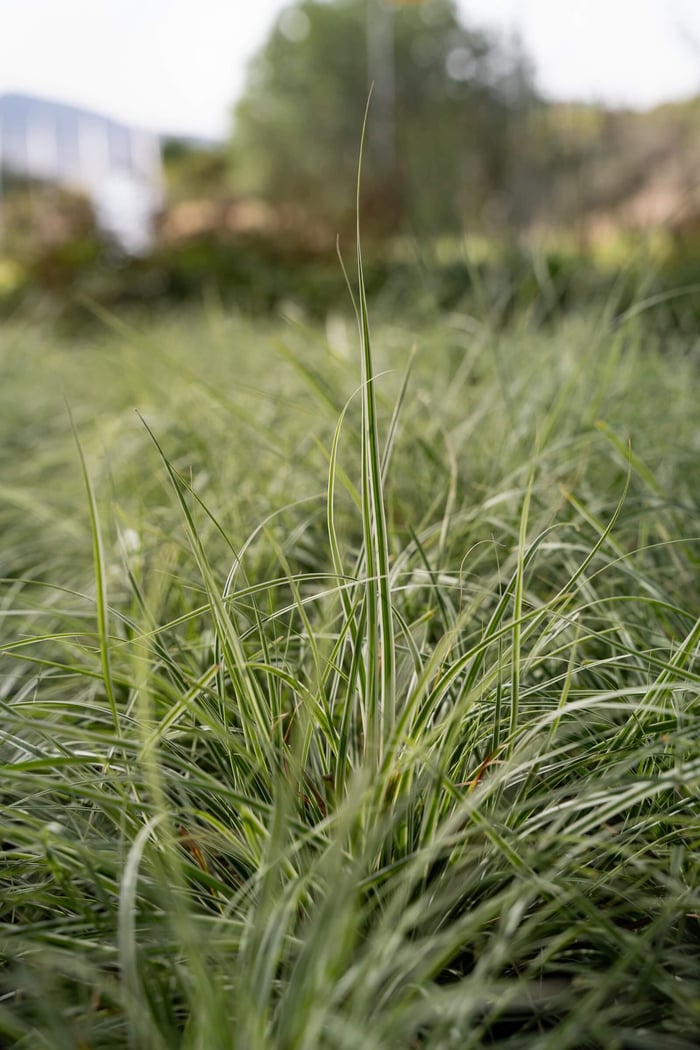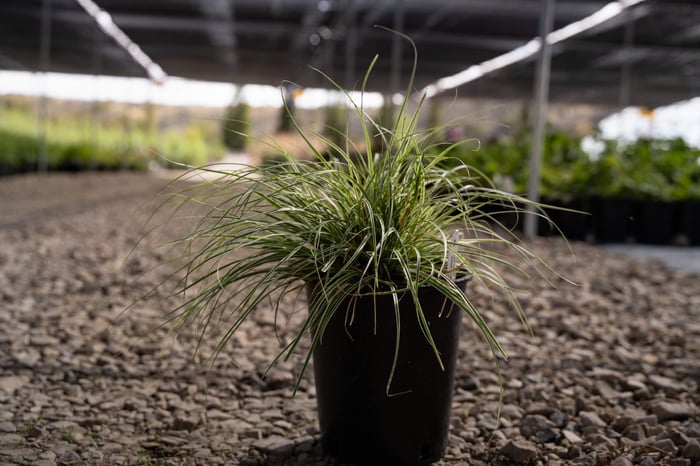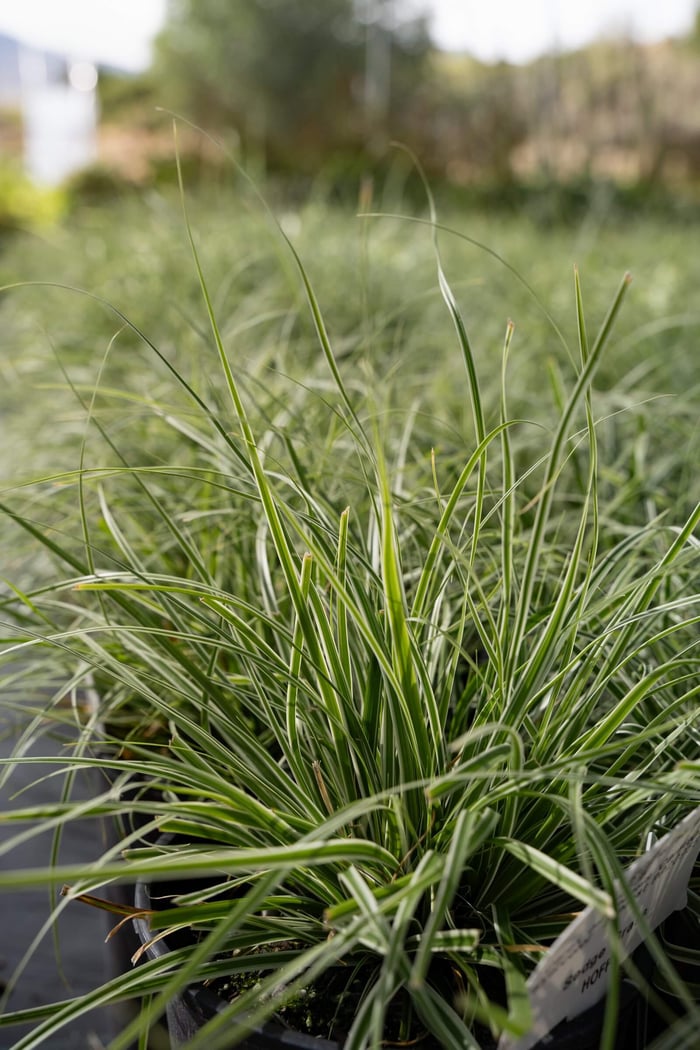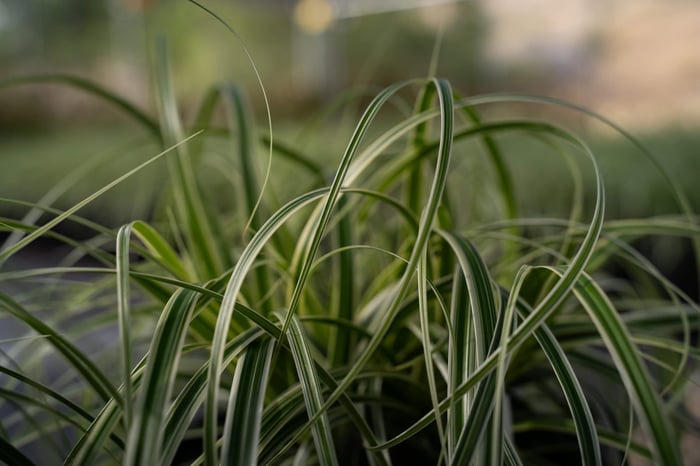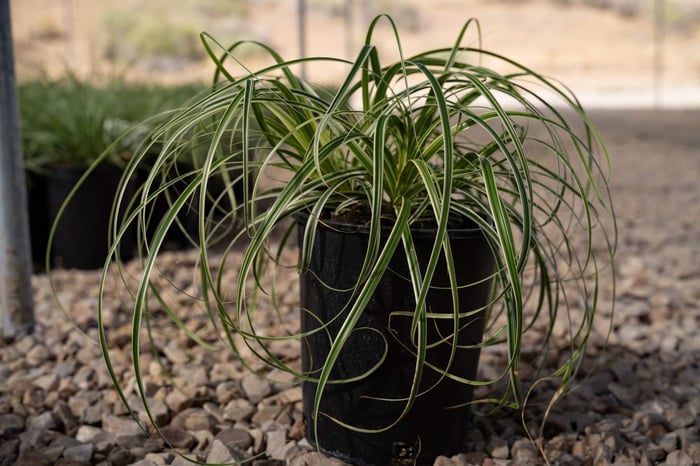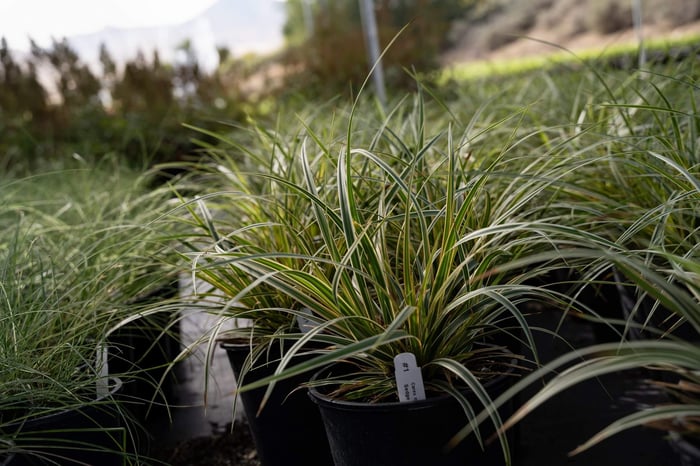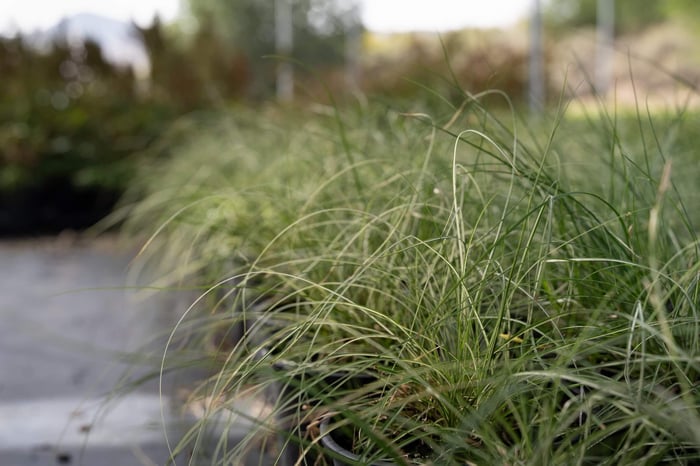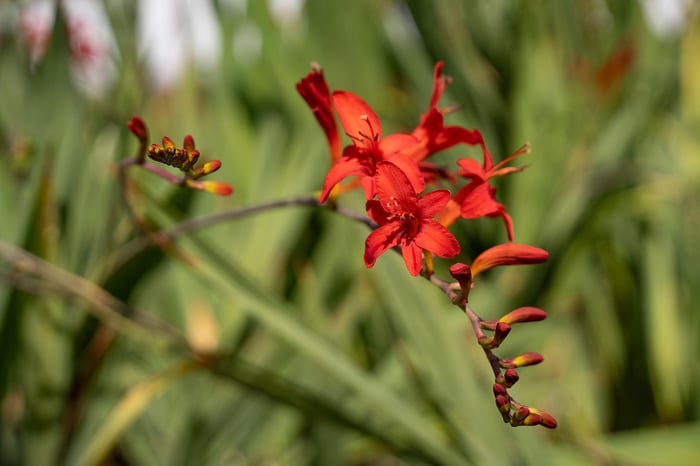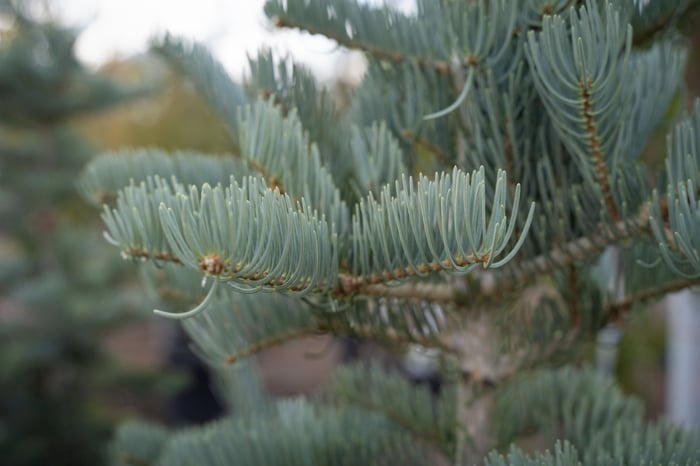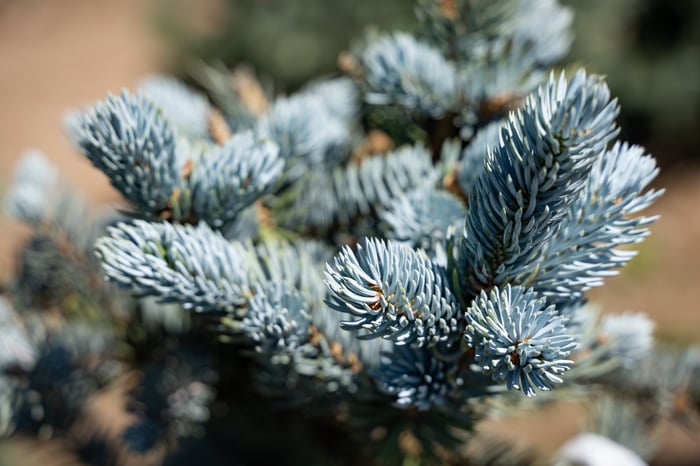You probably agree that not every plant in the garden should be a focal point plant. You need plants that can act as a canvas for other plants. Here at the nursery we have hundreds of beautiful plants that can stand out on occasion, but are also content to act as a backdrop for other plants. Your garden needs plants that simply behave—that aren’t fussy and don’t require a ton of special care. We call these plants utility players, and they’re absolutely indispensable in every garden. One of our favorite utility players is Sedge grass.
Today’s feature sedge grass has a long name, Carex oshimensis 'CarFit01' Evercolor® Everest PP20955. However, if you search ‘Everest’ on our website, it’s the only plant that comes up, so Everest it is.
We will also share images of other Carex grasses throughout this blog post because most of them behave similarly in the landscape. Some grow larger than others. Some are brighter than others or more variegated. Some can handle more sunlight than others, but all sedges like at least a little shade. Here in Utah, we recommend that you protect them from the hot afternoon sun. So even though most of this post will be focused on Everest, remember that much of what we say about one could be said about them all. Everest is a nice option, but you may see another Carex listed in this article that you like even more.
Everest is a variegated, clump-forming ornamental sedge that performs beautifully across microclimates in Utah, Idaho, Wyoming and Colorado. Where you plant it depends on your elevation and sun exposure. In the lower, warmer elevations, plant it in part shade with some relief from the hot afternoon sun. Because Everest has white stripes, it will bring a bright pop to the shadier spots in your landscape. In higher elevations, where the temperatures are cooler, you can plant sedges in full sun.
Like most Carex, this beautiful grass is not a dramatic bloomer but it offers great color, texture, and season-long structure, especially as the garden shifts toward fall. You’ll love its color and growth habit. This low-mounding grass features ribbon-like white striped green foliage that arches up from the crown and weeps gracefully for an eye-catching splash in your garden.
Quick Plant Facts
Common Name: Sedge Grass
Botanical Name: Carex oshimensis 'CarFit01' Evercolor® Everest PP20955
Plant Type: Ornamental sedge (clumping)
Mature Size: Height 18 to 24 inches Width: 24 inches
USDA Zones: 5
Sun Requirements: Varies — part shade to full sun depending on elevation and exposure
Water Needs: Moderate — drought-tolerant once established but appreciates deep infrequent water
Why it’s useful: Texture, variegated foliage, low maintenance and excellent for erosion control or planting under light canopy trees.
Why Carex Works in the Intermountain West
Our region brings a mix of alkaline soils, baking summer sun, thin air and blunt cold. Carex (sedge grasses such as 'Everest') thrives here because it’s adaptable. It tolerates a range of soils, withstands strong sunlight, and keeps attractive foliage into fall and often through mild winters. It’s also an excellent companion for water-wise designs and native grass plantings.
Site and Soil: Practical Nursery Advice
Soil pH & texture: Most Intermountain soils are alkaline (pH 7.0–8.5). Carex oshimensis handles higher pH, but in heavy clay you will want to improve drainage. As you plant, work in a generous amount of compost, and perhaps even a couple of inches of coarse sand or small gravel to open the soil. In rockier mountain sites, mix a bit of compost to help retain moisture around the roots.
Drainage: Don’t let the crown of sedge grass sit in water. You don’t want the stems to rot at the ground level. In valley clay, build a slight mound or use a raised bed to avoid winter-saturated crowns.
Sun exposure: At lower elevations you’ll get the best color in part shade; at higher sites with cooler summer temperatures, fuller sun is acceptable. Just watch it. If the foliage bleaches in mid-summer, move your sedge to a spot with more afternoon shade.
Watering: Use deep, infrequent irrigation (drip is ideal). Water thoroughly while establishing it, then reduce the frequency. Group your sedge grass with plants that have similar moderate water requirements to conserve water.
Planting & Establishment
When to plant: Sedges do best when they're planted in either early spring after your soil has warmed, or early fall (4–6 weeks before the first hard frost). Planting in fall is ideal because your plant will have time to establish roots while your soil is still warm from the summer months, without fighting against the stress of scorching summer heat.
Hole and amendment: Dig a hole only as deep as the root ball and twice as wide. Backfill with native soil amended with compost and a handful of rock grit in clay sites.
Maintenance—The Nursery Secrets
Dividing for vigor: We divide sedge clumps every 3–4 years. It’s a great way to refresh older plants and multiply your stock. Divide in early spring as new growth begins so the pieces establish quickly.
Shearing: For tidy beds, shear foliage to the ground in late winter or early spring before new shoots emerge. You may also choose to leave foliage through winter for insulation and visual interest. Cut it back in spring before it starts to send out new shoots.
Fertilizing: Minimal fertilizing is best for sedge grasses. A light top dressing of compost in spring is usually sufficient. Avoid high-nitrogen feeds that encourage soft, tender growth susceptible to wind scorch and winter desiccation.
Iron chlorosis: Although chlorosis is rare, it is possible in extremely alkaline soils. Rather than frequent chelated iron applications, first try improving your soil’s organic matter. Add targeted foliar sprays only if needed.
Advanced tip — hydrating before freeze: In late fall, give a deep watering before the ground freezes; this helps perennials withstand winter desiccation from wind and sun. Do not overwater before the freeze, just ensure the ground is moist as the temperatures drop.
Autumn Interest & Winter Preparation
As Utah gardens transition to fall, Carex 'Everest' becomes a quietly handsome element: its variegated leaves pick up soft golden light, and clumps hold form after many perennials flop. Follow these fall-focused steps:
Leave foliage through the first few light frosts: It provides a buffer against cold and wind. If you prefer tidy beds, shear it gently after several hard frosts in late winter.
Final deep watering: Water well in late fall before the soil freezes to reduce winter desiccation from dry winds.
Mulch carefully: Apply 1–2 inches of organic mulch after the ground is frozen to moderate soil temperature. Avoid heavy mulch against the crown which can trap moisture and induce rot in wet winters.
Adding sedge grass to your outdoor space will add a unifying element to your entire yard and bring a bright pop to fall. Right now, while temperatures are dropping, is an ideal time to plant. Why not take a few minutes to add this stunning plant to your landscape? Good luck and happy gardening!

